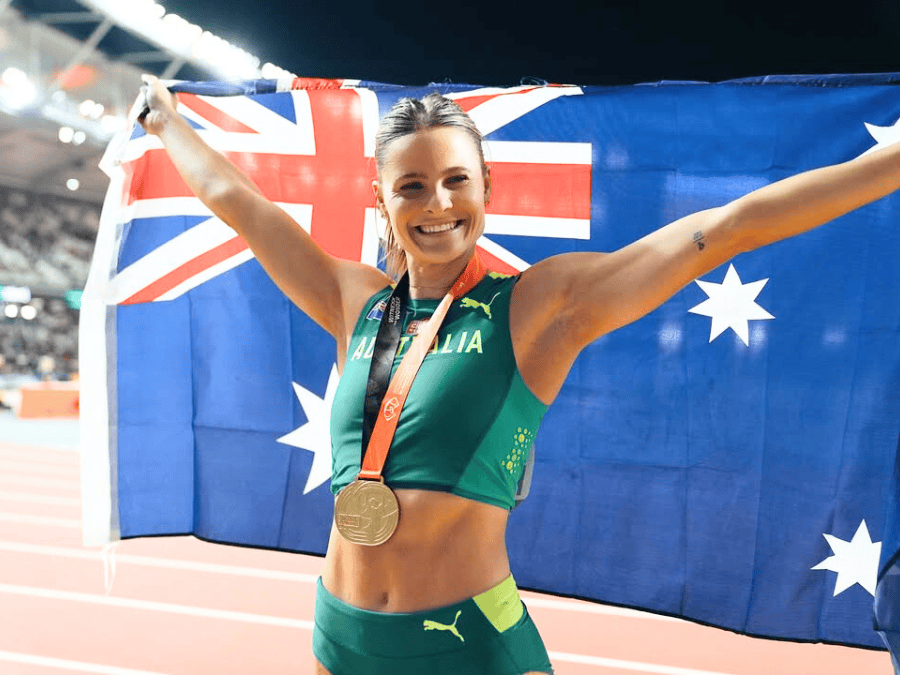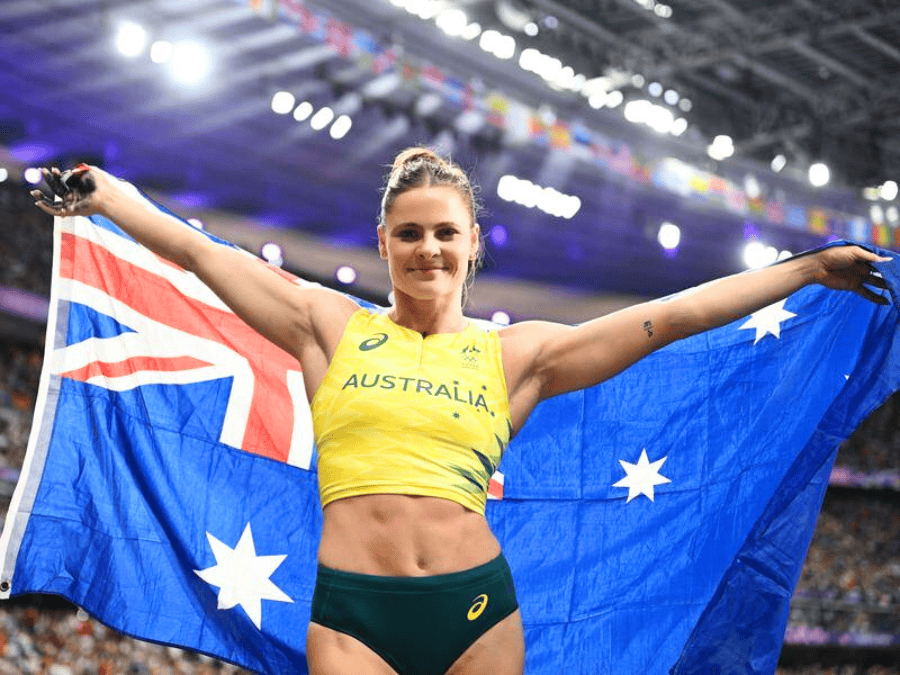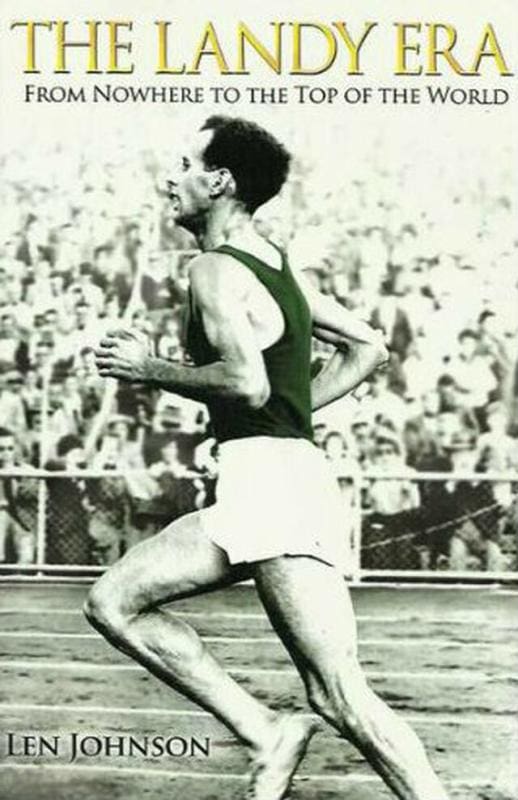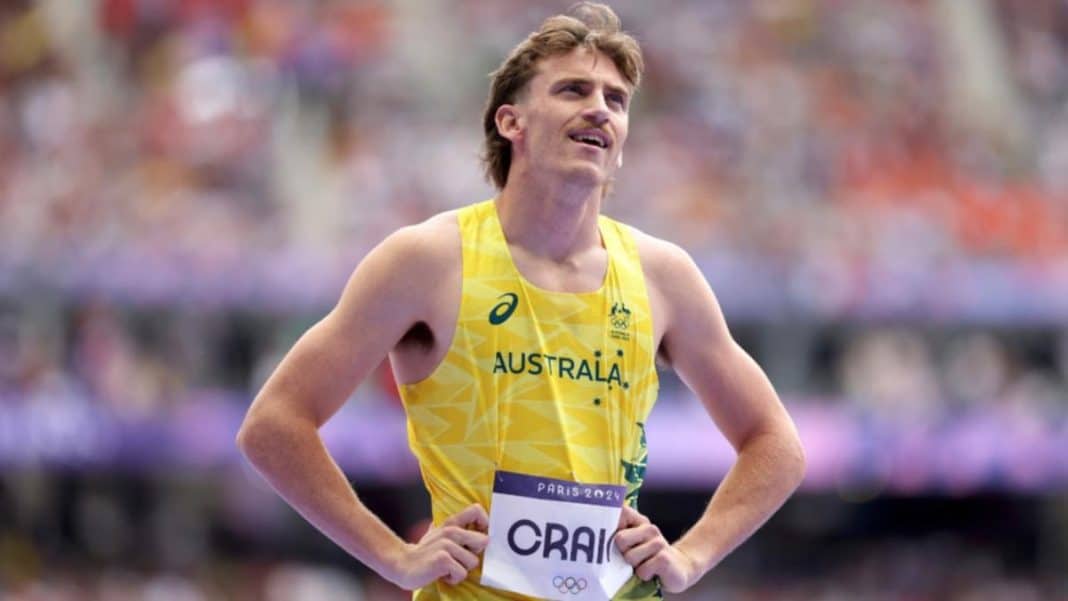By Len Johnson
Just as you don’t need a weatherman to know which way the wind blows; Nina Kennedy didn’t need a magazine to tell her she was the number one female pole vaulter in the world last year.

An Olympic gold medal, victory in the Diamond League final among five wins in the six DL meetings in which the Australian competed – such stats present an eloquent argument. Not to mention an overwhelming one.
But it’s always nice to have your achievements noted, especially by Track & Field News magazine whose annual rankings – men since 1947, women since 1976 – are the original and remain the best of the yearly reviews of a statistically driven sport.
Duly noted and could someone please move that this represents a true and accurate picture of events and outcomes in the year 2024. Passed unanimously.

In keeping with practice in recent years, the magazine has been releasing its rankings in piecemeal fashion, beginning with the male and female athletes of the year. Mondo Duplantis was male AOY, Sydney McLaughlin-Levrone took out the female award. More of that later.

As noted in her citation, Kennedy becomes the first Australian number one since Emma George, one of the true pioneers of women’s pole vault, in 1998. George competed a hat-trick of number one rankings that year.

Kennedy could emulate that feat two years from now if she maintains her current performance level. She is on the right trajectory having got her first ranking points when finishing third in 2022, advancing to second in 2023 when she shared the world championships gold with Katie Moon, and now top of the bill.
About the only accolade Kennedy missed – narrowly, at that – was a place in the overall women’s top 10 across all events. She was thirteenth, missing out on becoming the first Australian male or female to get a top-10 since Sally Pearson was second in 2011, the year she won her first world championships gold medal in the 100 hurdles.

Steve Hooker was the last Australian male to be voted top-10, finishing fifth in 2009 after adding a world championship gold in the pole vault to his Beijing Olympic gold the previous year.

Ron Clarke (1965) is the only Australian to have earned an Athlete of the Year award from Track & Field News. He was also voted in the top-10 in three other years. Cathy Freeman was second in 2000 among her three top-10 years, steeple-chaser Kerry O’Brien third in 1970, Pearson fourth in 2012, marathoner Rob De Castella sixth in 1983 and 400 hurdler Jana Pittman tenth in 2003.

Seven other Australians got a top-10 event ranking in 2024. Olympic silver medallist Jess Hull was second in the women’s 1500 as was another Olympic silver medallist in Nicola Olyslagers in the high jump and Mackenzie Little in the javelin.
Olympic bronze medallist and Diamond League champion Matt Denny was third in the discus, while two other Paris bronze medallists – walker Jemima Montag and high jumper Eleanor Patterson were ranked fifth. Pole vaulter Kurtis Marschall was ranked sixth in his event.

The total of eight rankers was two down on 2023’s 10, four down on 2022 (12) and six down on the recent high of 14 in 2021. The difference is almost entirely explained by the absence of middle-distance runners in 2024. Only Hull got a top 10 ranking, whereas in previous years Olli Hoare, Linden Hall, Peter Bol, Catriona Bisset and Stewie McSweyn have all been ranked. None of them is going away and the presence of emerging talent like Abbey Caldwell, Claudia Hollingsworth, Luke Boyes, Peyton Craig and Cam Myers suggests the lull is only temporary.

Now, let’s get back to the overall AOYs. My first thoughts were that Duplantis is a no-brainer on the men’s side, but I preferred Beatrice Chebet on the women’s. Her world record in the 10,000 at the Pre DL and double gold in Paris, defeating the current – Gudaf Tsegay – and immediate past – Faith Kipyegon – to win the 5000, were more than enough for mine.

These views crystallised when I saw the breakdown of the 33 voters. Just short of half – 15 out of 33 – put McLaughlin-Levrone at number one while 10 voted for Chebet and another five for high jump winner and world record breaker Yaroslava Mahuchikh.
Then I dug a little deeper. Far from it being a rarity for the overall AOY not to garner half or more of the no.1 votes, it happens with surprising frequency. With T&FN’s website the main source, I found three of the 19 men’s AOYs back to Asafa Powell in 2006 had got less than half and one had precisely half. On the women’s side there were no fewer than six at less than half and another right on half.Speaking of McLaughlin-Levrone’s Paris 400 hurdles gold and world record recently, Sebastian Coe commented he had seen only one other Olympic performance to compare “in terms of strength of character, physically and mentally, and that was David Rudisha winning (the 800 in a world record) in London gun to tape.”
I’ll bow to Lord Coe’s judgement there. And like McLaughlin-Levrone this year, Rudisha was AOY back in 2012. Surprisingly, however, the voting panel did not see it was clearly as the man who organised the London Olympics and held the 800 world record from 1979 to 1997. A mere nine of 37 – just short of 25 percent – gave Rudisha their no.1 vote. Decathlete Ashton Eaton got 12 votes, Usain Bolt (you remember him) eight and hurdles champion Aries Merritt seven (Mo Farah picked up the remaining one). The extreme on the women’s side was Elaine Thompson-Herah. In taking the female AOY in 2021, the year of her second Olympic 100/200 double, she gained only 10 out of 35 no.1 votes.
Not having a majority of the no.1 votes is no bar to accruing the most votes overall. As with Rudisha in 2012, there was also any number of candidates for female AOY. Besides already mentioned Kipyegon, Chebet and Mahuchikh, Marileidy Paulino was unbeaten at 400, Valarie Allman likewise in the discus and Sifan Hassan compiled that amazing sequence of Olympic performances (and won the marathon!). All had a claim to be ranked no.1.

The other interpretation of McLaughlin-Levrone’s 2024 is that some voters had misgivings as to whether a season of three 400 hurdles events – even ‘bolstered’ by three 200s and two 400s – is sufficient for a potential AOY (one apparent dissenter placed her at no.8).
Put another way: Mclaughlin-Levrone ran three times at her specialty (albeit with two world records), Duplantis had three world records as well as 12 other competitions in a physically demanding event. Duplantis did a lot; McLaughlin-Levrone a lot with a little. A maximalist and a minimalist as AOYs? It’s about right on average, I guess.